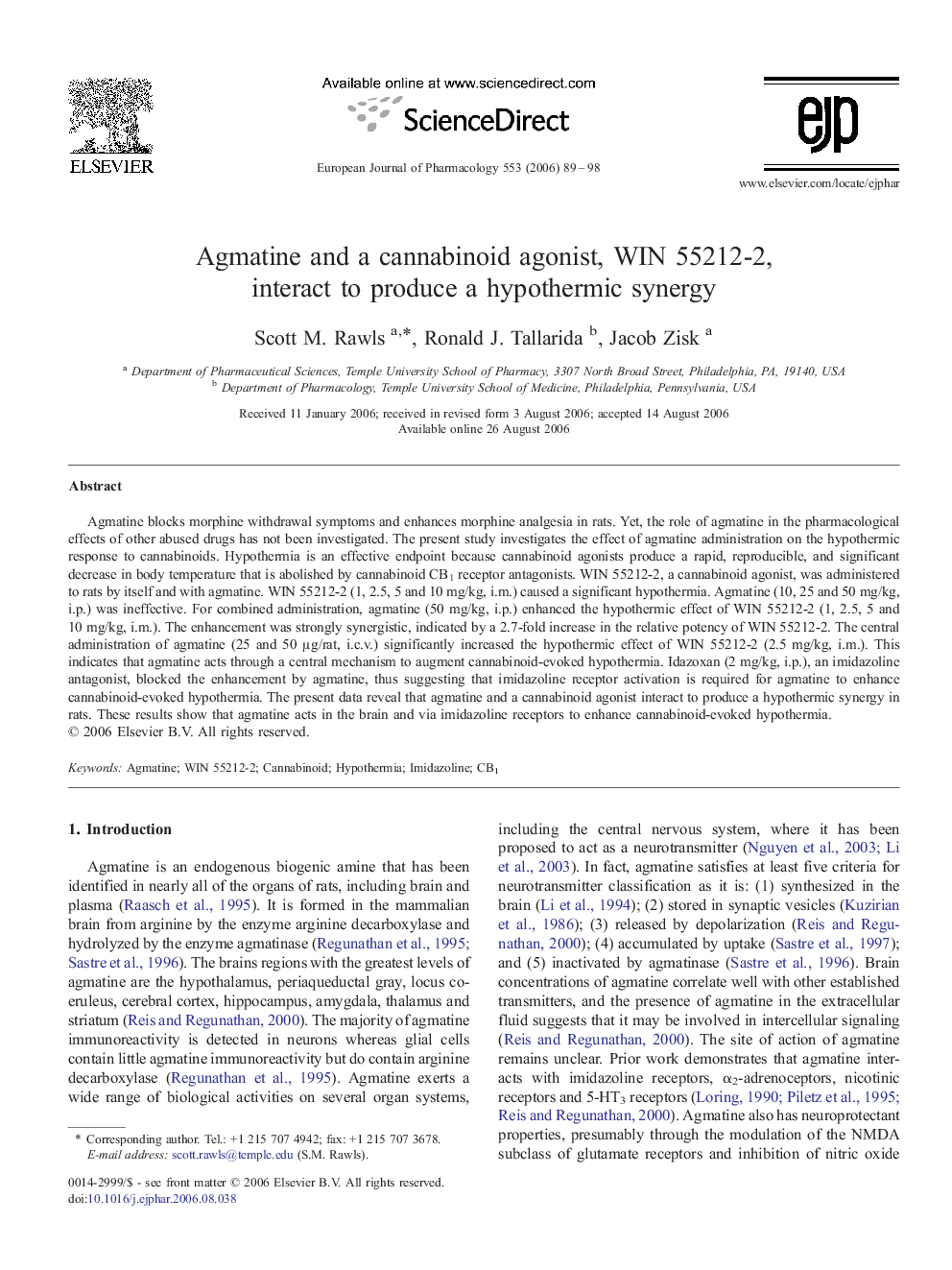| Article ID | Journal | Published Year | Pages | File Type |
|---|---|---|---|---|
| 2536554 | European Journal of Pharmacology | 2006 | 10 Pages |
Agmatine blocks morphine withdrawal symptoms and enhances morphine analgesia in rats. Yet, the role of agmatine in the pharmacological effects of other abused drugs has not been investigated. The present study investigates the effect of agmatine administration on the hypothermic response to cannabinoids. Hypothermia is an effective endpoint because cannabinoid agonists produce a rapid, reproducible, and significant decrease in body temperature that is abolished by cannabinoid CB1 receptor antagonists. WIN 55212-2, a cannabinoid agonist, was administered to rats by itself and with agmatine. WIN 55212-2 (1, 2.5, 5 and 10 mg/kg, i.m.) caused a significant hypothermia. Agmatine (10, 25 and 50 mg/kg, i.p.) was ineffective. For combined administration, agmatine (50 mg/kg, i.p.) enhanced the hypothermic effect of WIN 55212-2 (1, 2.5, 5 and 10 mg/kg, i.m.). The enhancement was strongly synergistic, indicated by a 2.7-fold increase in the relative potency of WIN 55212-2. The central administration of agmatine (25 and 50 μg/rat, i.c.v.) significantly increased the hypothermic effect of WIN 55212-2 (2.5 mg/kg, i.m.). This indicates that agmatine acts through a central mechanism to augment cannabinoid-evoked hypothermia. Idazoxan (2 mg/kg, i.p.), an imidazoline antagonist, blocked the enhancement by agmatine, thus suggesting that imidazoline receptor activation is required for agmatine to enhance cannabinoid-evoked hypothermia. The present data reveal that agmatine and a cannabinoid agonist interact to produce a hypothermic synergy in rats. These results show that agmatine acts in the brain and via imidazoline receptors to enhance cannabinoid-evoked hypothermia.
